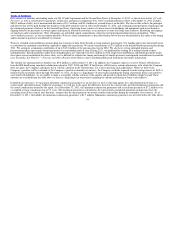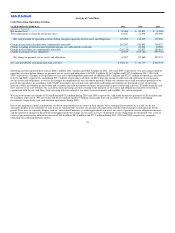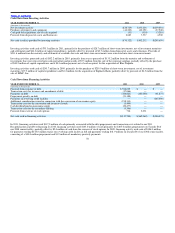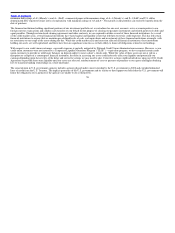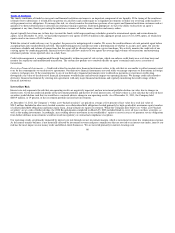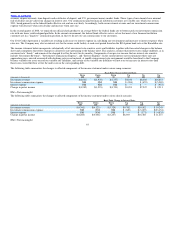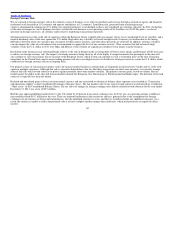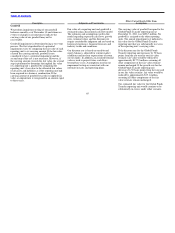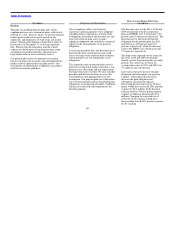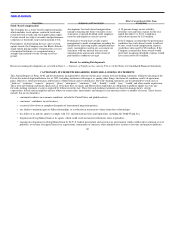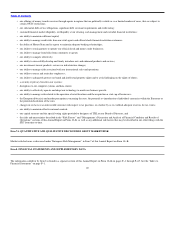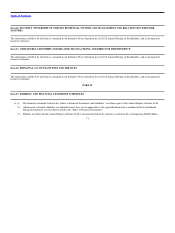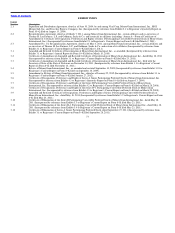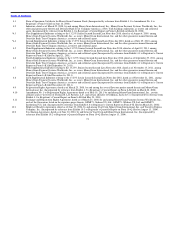MoneyGram 2011 Annual Report Download - page 65
Download and view the complete annual report
Please find page 65 of the 2011 MoneyGram annual report below. You can navigate through the pages in the report by either clicking on the pages listed below, or by using the keyword search tool below to find specific information within the annual report.
Table of Contents CRITICAL ACCOUNTING POLICIES
The preparation of financial statements in conformity with GAAP requires estimates and assumptions that affect the reported amounts and related
disclosures in the consolidated financial statements. Actual results could differ from those estimates. On a regular basis, management reviews its accounting
policies, assumptions and estimates to ensure that our financial statements are presented fairly and in accordance with GAAP. Our significant accounting
policies are discussed in Note 2 — Summary of Significant Accounting Policies of the Notes to Consolidated Financial Statements.
Critical accounting policies are those policies that management believes are very important to the portrayal of our financial position and results of
operations, and that require management to make estimates that are difficult, subjective or complex. Based on these criteria, management has identified and
discussed with the Audit Committee the following critical accounting policies and estimates, including the methodology and disclosures related to those
estimates.
Description Judgments and Uncertainties Effect if Actual Results Differ From
Assumptions
Fair Value of Investment Securities
The Company has available−for−sale investments that
are recorded at their estimated fair value. Our
available−for−sale investments are comprised
primarily of U.S. government agency debenture
securities and residential mortgage−backed securities
collateralized by U.S. government agency debenture
securities. In addition, we hold other asset−backed
securities and have historically held three trading
investments.
We estimate fair value for our investments as an “exit
price,” or the exchange price that would be received
for an asset in an orderly transaction between market
participants. Observable price quotes for our exact
securities are not available. For our government
agency debentures and residential mortgage−backed
securities, similar securities trade with sufficient
regularity to allow observation of market inputs
needed to estimate fair value. For our other
asset−backed securities, the overall liquidity and
trading within the relevant markets is not strong.
Accordingly, observable market inputs are not as
readily available and estimating fair value is more
subjective.
The degree of management judgment involved
in determining the fair value of an investment is
dependent upon the availability of quoted
market prices, observable market inputs and the
extent to which the relevant investment markets
are active.
The use of different market assumptions or
valuation methodologies may have a material
effect on the estimated fair value amounts. Due
to the subjective nature of these assumptions,
the estimates determined may not be indicative
of the actual exit price if the investment was
sold at the measurement date. In the current
market, the most subjective assumptions include
the default rate of collateral securities, loss
severity and risk premiums as it relates to our
other asset−backed securities.
As of December 31, 2011, we hold
investments classified as other asset−backed
securities with a fair value of $24.2 million.
Using the highest and lowest prices received
or internally estimated during the valuation
process, the range of fair value for these
securities was $23.5 million to $28.1 million.
At December 31, 2011, $18.8 million, or less
than one percent, of our total investment
portfolio was valued using internal pricing
information. No third party price was able to
be obtained for these securities.
64


